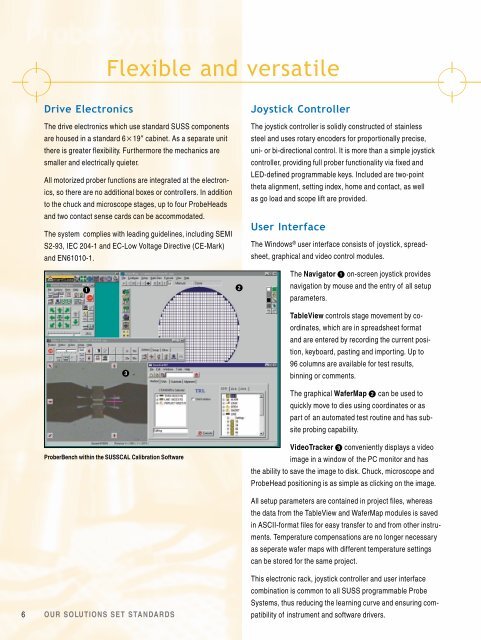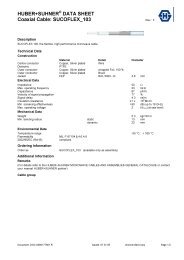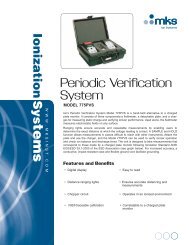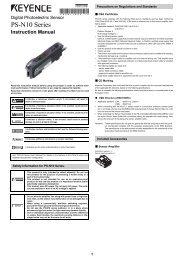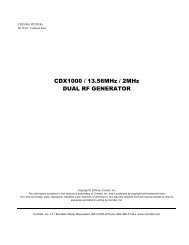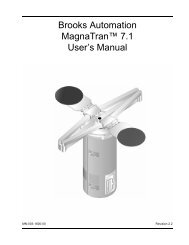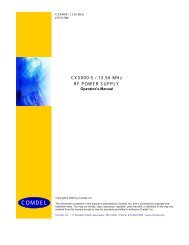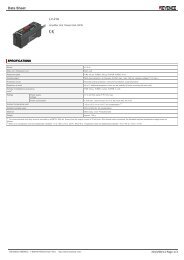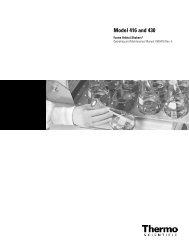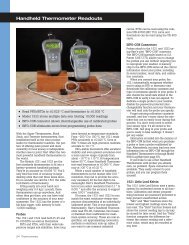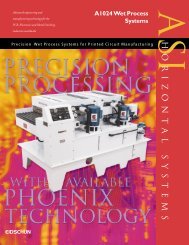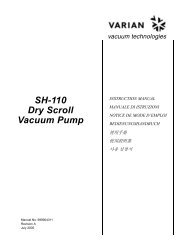Karl Suss Semiautomatic Probe System - CERN
Karl Suss Semiautomatic Probe System - CERN
Karl Suss Semiautomatic Probe System - CERN
You also want an ePaper? Increase the reach of your titles
YUMPU automatically turns print PDFs into web optimized ePapers that Google loves.
Flexible and versatile<br />
Drive Electronics<br />
The drive electronics which use standard SUSS components<br />
are housed in a standard 619 cabinet. As a separate unit<br />
there is greater flexibility. Furthermore the mechanics are<br />
smaller and electrically quieter.<br />
All motorized prober functions are integrated at the electronics,<br />
so there are no additional boxes or controllers. In addition<br />
to the chuck and microscope stages, up to four <strong>Probe</strong>Heads<br />
and two contact sense cards can be accommodated.<br />
The system complies with leading guidelines, including SEMI<br />
S2-93, IEC 204-1 and EC-Low Voltage Directive (CE-Mark)<br />
and EN61010-1.<br />
<br />
<br />
<strong>Probe</strong>rBench within the SUSSCAL Calibration Software<br />
<br />
Joystick Controller<br />
The joystick controller is solidly constructed of stainless<br />
steel and uses rotary encoders for proportionally precise,<br />
uni- or bi-directional control. It is more than a simple joystick<br />
controller, providing full prober functionality via fixed and<br />
LED-defined programmable keys. Included are two-point<br />
theta alignment, setting index, home and contact, as well<br />
as go load and scope lift are provided.<br />
User Interface<br />
The Windows ® user interface consists of joystick, spreadsheet,<br />
graphical and video control modules.<br />
The Navigator on-screen joystick provides<br />
navigation by mouse and the entry of all setup<br />
parameters.<br />
TableView controls stage movement by coordinates,<br />
which are in spreadsheet format<br />
and are entered by recording the current position,<br />
keyboard, pasting and importing. Up to<br />
96 columns are available for test results,<br />
binning or comments.<br />
The graphical WaferMap can be used to<br />
quickly move to dies using coordinates or as<br />
part of an automated test routine and has subsite<br />
probing capability.<br />
VideoTracker conveniently displays a video<br />
image in a window of the PC monitor and has<br />
the ability to save the image to disk. Chuck, microscope and<br />
<strong>Probe</strong>Head positioning is as simple as clicking on the image.<br />
All setup parameters are contained in project files, whereas<br />
the data from the TableView and WaferMap modules is saved<br />
in ASCII-format files for easy transfer to and from other instruments.<br />
Temperature compensations are no longer necessary<br />
as seperate wafer maps with different temperature settings<br />
can be stored for the same project.<br />
6<br />
OUR SOLUTIONS SET STANDARDS<br />
This electronic rack, joystick controller and user interface<br />
combination is common to all SUSS programmable <strong>Probe</strong><br />
<strong>System</strong>s, thus reducing the learning curve and ensuring compatibility<br />
of instrument and software drivers.


